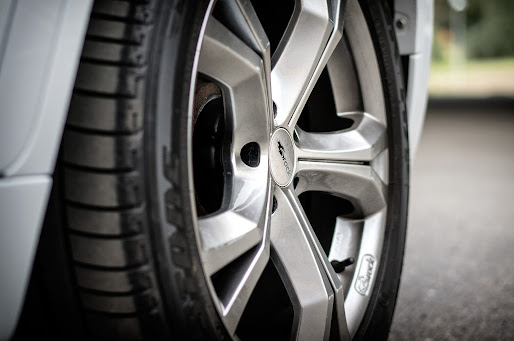Choosing the Right Tyres for Peak Performance and Safety
Few parts in car safety are as important as tyres. Continental Tyres in Stevenage provides complete services guaranteed to keep your car at its best performance and safety standards. Every motorist who values road safety and vehicle efficiency needs professional tyre services.
Good tyre care goes beyond just changing out old rubber. It covers seasonality, pressure monitoring, alignment, and balancing. Every one of these procedures makes a major difference in how well your car handles, runs on gasoline, and stays generally safe on the road.
Understanding Tyre Manufacturing Excellence
The Evolution of Tyre Technology
Among the most important developments in automotive technology is the creation of contemporary tyres. Built with several layers of rubber, fabric, and different compounds, today's tyres are engineering wonders meant to offer the best performance under many conditions.
To provide goods with exceptional grip, lower noise, more durability, and improved fuel economy, premium tyre makers actively engage in research and development. Tyres in Stevenage made from this dedication to invention excel on many road surfaces, in harsh temperatures, and in rainy circumstances.
Materials and Construction
Modern tyres consist of several important parts. Made from specially developed rubber compositions, the tread offers traction and conducts water away from the contact patch. While fabric plies build the tyre's structure and flexibility, steel belts under the tread offer stability and form preservation.
The sidewall shows important information such as size, weight rating, and speed rating and shields the inner construction. Most modern tyres do not need inner tubes since a rubber liner guarantees watertight sealing.
Selecting the Right Tyres for Your Vehicle
Understanding Tyre Classifications
Selecting suitable tyres calls for knowledge of many classifications. In warm, dry weather, summer tyres offer great grip and handling; yet, they lose their performance as temperatures fall. Featuring unique rubber compounds and tread patterns, winter tyres shine in cold, snowy weather.
While not performing particularly well in harsh conditions, all-season tyres provide a compromise by operating well enough over a range of weather conditions. While economy tyres stress durability and fuel efficiency, performance tyres give handling and grip first priority at greater speeds.
Reading Tyre Specifications
Every tyre sidewall includes important information provided in a consistent style. A label like " 205/55 R16 91V" for a tyre with 205mm width, 55% aspect ratio (height to width), 16-inch rim diameter, 91 load index (615kg capacity), and V speed rating (up to 240km/h).
Knowing these criteria guarantees that you choose tyres fit for your driving style and vehicle need. Incorrect specs can compromise safety, fuel efficiency, and handling.
Professional Tyre Services
Tyre Fitting and Balancing
Expert tyre fitting guarantees correct fitment on the rim without damaging the sidewall or bead. This operation calls for specialist tools to safely stretch the tyre over the rim while preserving its structural integrity.
Wheel balance is crucial once fit. By carefully arranging tiny weights on the wheel, this technique finds and fixes weight imbalances. Well-balanced wheels reduce vibrations, increase comfort, and stop early wear on the tyres themselves and suspension components.
Alignment Services
Wheel alignment is bringing your vehicle's wheels into manufacturer-recommended angles. Correct alignment guarantees that your tyres make ideal contact with the road, improving handling, lowering tyre wear and increasing fuel economy.
Alignment calls for three main angles: camber, the vertical tilt of the wheel; caster, the forward or backward tilt of the steering axis; and toe, the direction the wheels point relative to the vehicle's centre line. Especially following potholes or kerbs, regular alignment checks are advised.
Seasonal Tyre Considerations
The Importance of Seasonal Changes
The pressures on your tyres change with the seasons, and so do the weather conditions. Seasonal tyre replacements help many drivers to achieve ideal performance and safety by varying between summer and winter tyres.
In warm, dry weather, summer tyres offer superb grip and handling. Their rubber formulations and tread patterns are maximised for temperatures exceeding 7°C. Conversely, thanks to unique rubber compounds that remain flexible in low temperatures and tread designs meant to grip snow and ice, winter tyres shine in cold, wet, or snowy situations.
Tyre Storage Solutions
Seasonal tyres need correct storage to keep their condition even when in use. Before storage, tyres should be cleaned and kept in a cool, dry environment free from direct sunlight, heat sources, and ozone-producing machinery, including electric motors.
To stop deformation, ideally, tyres should be kept vertically rather than stacked. Mounted-on rims might be kept in specialist racks or hung from hooks. Good storage guarantees that tyres are ready for use when the seasons change and extends their lifetime.
Extending Tyre Life Through Proper Maintenance
Regular Pressure Checks
The easiest but most efficient approach to prolonging tyre life is probably keeping proper tyre pressure. While overinflated tyres have smaller contact areas, therefore decreasing grip and wearing unevenly, underinflated tyres flex excessively, producing heat and accelerating wear.
Monthly pressure checks are advised, ideally when tyres are cold. The owner's handbook on the driver's doorjamb or inside the fuel filler flap will have the correct pressures for your car.
Rotation Schedules
Tyre rotation is shifting tyres around your vehicle to guarantee even wear. Because of the impacts of weight distribution, steering, and braking, front and rear tyres wear differently.
Usually crossing them in the process, a normal rotation pattern moves front tyres to the rear and rear tyres to the front. < varied sized front and rear tyres or directional tyres call for varied rotation patterns for cars using them. Usually, rotations are advised every 8,000 to 10,000 km.




Comments
Post a Comment